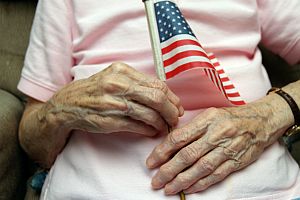How to Stay Flexible and Combat Hereditary Arthritis
 The genetic makeup of some individuals makes them more apt to get particular types of arthritis than others — making it clear that genes do play a role in who gets arthritis and who does not. There are more than 200 different types of arthritis, and the bulk of them are not what medical researchers and clinicians would call “hereditary” conditions.
The genetic makeup of some individuals makes them more apt to get particular types of arthritis than others — making it clear that genes do play a role in who gets arthritis and who does not. There are more than 200 different types of arthritis, and the bulk of them are not what medical researchers and clinicians would call “hereditary” conditions.
A genetic predisposition doesn’t necessarily mean everyone will get arthritis. In fact, there are plenty of people who have a genetic predisposition for it but never suffer from this debilitating ailment.
An Example of Genetic Arthritis
Rheumatoid arthritis, for example, is when joints are inflamed due to the body’s immune system attacking the lining of those joints. Genes in a person’s body such as the HA-DR4 and HLA-DRB1 can increase the likelihood a person will get this type of arthritis. In fact, a report from Harvard Medical states that this type of arthritis affects two percent of the population and is more common in women than men.
Osteoarthritis, one that affects the elderly, is also tied to genetics. While it is the result of daily wear and tear on the joints, it has been noted that those with a genetic predisposition or a family history of osteoarthritis are more likely to get it in the future.
Developing Arthritis
The severity of arthritic symptoms can be influenced by more than just genetics. In fact, hormones can increase or decrease the amount of paint associated with arthritis. Some women have reported less arthritis pain when they become pregnant, only for the symptoms to return once their pregnancy is over.
How to Stay Flexible and Prevent Arthritis
Even if you are genetically predisposed to arthritis, there are things you can do to combat the symptoms and remain flexible so you reduce the signs of or pain of the disorder. There are common predisposing factors that can lead to acquiring arthritis. With those in mind, here are some things you can do to combat arthritis:
Age
Just because you’re older doesn’t mean you should ignore your body. There are aches and pains associated with getting older, and most people lower their level of physical activity because of it. But, if you remain active, perform daily stretches and keep your body healthy, you could reduce the impact of arthritis on your body.
Injury
Take care of your body to avoid excess injuries. Stretch before working out, seek out regular chiropractic care, and wear proper fitting shoes for a start.
Stay Hydrated
Mild dehydration can lead to short-term memory loss, less endurance and increased fatigue. Mild to moderate dehydration can actually impair your performance and lower your psychomotor skills. Drink at least eight 8-ounce glasses of water per day.
Inactivity
Inactivity can actually make arthritic pain worse. According to the Center for Disease Control, physical activity may reduce pain, improve body function and mood, and even improve the quality of life of arthritis sufferers. Try to get at least two and a half hours of moderate exercise per week.
Being Overweight
When you are overweight (or obese), you put excess strain on your muscles and joints, which can actually increase arthritic pain.
Hope for Arthritis Sufferers
While there might not be a cure for arthritis once it’s present, there are things you can do to make the pain less noticeable and improve your quality of life. Visiting your chiropractor for a check up to see what type you have or if you have arthritis at all is the first step. Dr. Nicole Muschett, the movement specialist Chiropractor of Bethlehem, PA, invites you to her clinic for a pain assessment so that you can see what stretches and preventative treatments can be done to lessen the pain associated with arthritis.